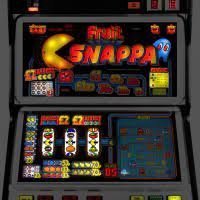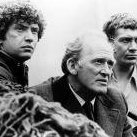Leaderboard
-
[[Template core/front/popular/memberRow is throwing an error. This theme may be out of date. Run the support tool in the AdminCP to restore the default theme.]]
[[Template core/front/popular/memberRow is throwing an error. This theme may be out of date. Run the support tool in the AdminCP to restore the default theme.]]
[[Template core/front/popular/memberRow is throwing an error. This theme may be out of date. Run the support tool in the AdminCP to restore the default theme.]]
[[Template core/front/popular/memberRow is throwing an error. This theme may be out of date. Run the support tool in the AdminCP to restore the default theme.]]
Popular Content
Showing content with the highest reputation on 02/24/22 in all areas
-
Okay, 46 Charles Street The production line was just that, these coffins disguised as a ‘one armed bandits’ were in a line of about five, just the basic cabinet. We would fit all internal workings i.e. coin mechs, overflow tubes, payout mechs ,looms, I think most know what would be fitted inside, payout cup, handle boss e.c.t, each screw, nut and bolt by hand. The Jolly Roger didn’t stay in production for very long. Dave Shenton was working on a new type of machine, one which none of us were aware of. A complete new design of cabinet, new inners, new face front glass. If my memory serves me right (in my 70s now, mind gets muddled a bit) this “new” machine the mighty Monte Carlo. This machine made it harder on the back, bending over to install the inners, not so much for me as I was young but for the oldies Ralph was in his 50s John in his 70s. Later when sales picked up a raised platform was built with rollers (less backache); an air compressor system was installed allowing the use of air tools, drills, screwdrivers and so on. In the same room but behind a partition was where the girls worked, wiring reel units, control boards and payout boards. On the same floor was a store room, machine test area, a unit test area and an office for Dave Shenton, all this in a Victorian house. My basic wage was around £5-£7 a week but the bonus system was so good that I was bringing home between £25-£30 a week. As production increased more people were employed, bonuses decreased. Here is an interesting fact that now we would be saying “how could they do that”. In the storeroom there was a trap door when lifted there were stairs leading down to the basement which as I said earlier was the machine shop. If anyone wanted anything from the stores they would have to walk from the basement up two flights of stairs. Roger Collins said that this was a waste of valuable time so he decided to open up the stairs in the stores. Stacked high were dozens of Jennings and other makes of ‘one armed bandits’ Today when seeing these machines we would say “treasure trove”, heartbreak time, I and another worker called Karl had to strip these machines of all their inners (plenty of old 6d pieces, still currency then, needless to say they went into our pockets) and throw all the metal shells into a van that was then taken to the local rubbish tip and dumped. Why they would want to do that I do not understand because just up the road at 58 Charles Street was another company called Lynguard amusements, they had these types of machines rented out but they decided, “chuck them away”. Little did I know then I would work for that company a few years later. Behind the scenes the company had bought the premises in Ferry Road. We, the workers had no idea until one day we were told that production would stop, a meeting was set up with the whole work force, we were then told we were moving. Everything was taken from Charles Street, if it moved we took it. Vans were parked in the lane behind the building being loaded up. At Ferry Road all the buildings were set up ready to start production. Raised platforms with empty cabinets all ready for work to start. A wiring department, two test areas, a building for a machine shop, also one for cabinet making. A.C.E. was becoming big. More later if interested6 points
-
Hi All. Found this site just a few days ago. Memories came flooding back. Here goes with my first encounter with fruit machines and the following years. 1966 I was 16 years old; I had an interview at A.C.E. with a Mr Dave Shenton (more about him later). I was lucky I started work the next day. A.C.E. was a relatively new company it was set up by the Collins family, Maurice (the father), Michael and Roger (brothers). Dave Shenton was a director; he was the brains behind the company. He had spent some time in America learning as much as he could about ‘one armed bandits’. The company was working from 46 Charles Street in the centre of Cardiff. The ground floor was offices, the second floor production line, wiring section, test area and stores, third floor more offices. There was also a basement which became the machine shop making most of the metal components for the machines. The Jolly Roger was the first machine made by A.C.E, although it was called by the old fashioned ‘one armed bandit’. This machine for anybody that is not familiar with the Jolly Roger I’ll give a brief description. I have tried searching for photos of the Jolly Roger without any luck The best way to describe the cabinet is that it was shaped quite like a coffin standing on its end. It had the traditional ‘arm’ on the right hand side and a glass front with the picture of a pirate front centre (if my memory serves me right). At the top of the cabinet were three small round windows, lights would flash showing the symbols (I will describe later how these would light the individual symbol). There were just four of us on the production line, myself, the foreman, David Davis, Ralf Foward (later to become the store man) and John Jenkins. Working the test area was Tony Mathews We would turn out between 5 and 10 machines a week. I was interested in the workings of the machine so I would spend my coffee and dinner breaks sat behind them trying to find out how they worked, little did I know both Dave Shenton and Tony Mathews noticed my interest that later on they would offer me promotion which led me from production line to testing, fault finding and helping design. Not to make this too boring I’ll post this and if anyone is interested I will add more about life in Charles street and A.C.E. moving from the City centre to A.C.E. house in ferry road2 points
-
2 points
-
So are you saying it works fine with the speakers disconnected or has the original fault now gone after it has timed out the alarm. It could well be some kind of strim alarm if you've messed with the coin mech. Is anything displayed on the LCD screen? How many green/red light flashes on the MPU are there?2 points
-
Thought I'd start a new topic featuring clips of Jackpots with jackpot jingles. Feel free to add your clips. Here's a couple to get you started JPM Hot Pot Happy birthday to me😂😂😂 Barcrest Red Hot Roll mpu4 JPM Hi Note1 point
-
(Posting this also on DIF) Guys I am most familiar with the dreaded 52-36 no characteriser error on MPU5 program cards fitted with the battery however I have a wider question, specifically about the history and compatibility of the various generation of MPU5 program card. I know of at least 4 different types, as follows (I do not know the correct revision names): Basic type (A) - no battery or Compact Flash (CF) card slot - ROM chips only. Type B - Similar to (A) but with CF slot (for SW upload) Type C - CF slot and Battery and PIC chip (slot) (ticking timebomb cards 😞 ) Type D (Maybe called PC Type?) with CF slot, PIC chip and USB Type A socket but no battery So, to the questions. 1 - Are there official names for each version (and yes there may well be more)? 2 - Is the software limited to run on the exact card type that it was originally supplied on? For example could you write the SW from a type C card onto a type D card - or perhaps any other combination? The reason I ask is mainly to determine if those machines that originally had cards with batteries could be made to run on cards without batteries to try to avoid the inevitable 52 36 error due to battery damage. And yes I know fly wiring can hep but the question remains. Your thoughts please... Many thanks Slugfest1 point
-
I have a laod of these actel chips if any use as pulled em from rotten boards.1 point
-
would not have a clue mate as roms are not my thing i have heard people have done it in the past though and maybe you never no one day some one will sort it out 😁1 point
-
1 point
-
1 point
-
1 point
-
1 point
-
1 point
-
1 point
-
JPM Nudge Shuffle jackpot hold Pair of mpu5 jackpots in this video Barcrest Chances Unlimited1 point
-
I'm spoiling you all now haha Barcrest Spotlight mpu2 Maygay Wild Hold triple M tech AL Big Apple mpu1 as £2 jackpot Go on then. Feel free to post some of your jackpots🤗 Keep this place buzzin'1 point
-
Go on then.... A few more for you all Maygay Cash Pack Barcrest Viva Las Vegas Six mpu4 Barcrest Fortune Numbers mpu31 point
-
Tony you have everything. Sorry I never realised you had them. If it ok I will ring you tomorrow.1 point






